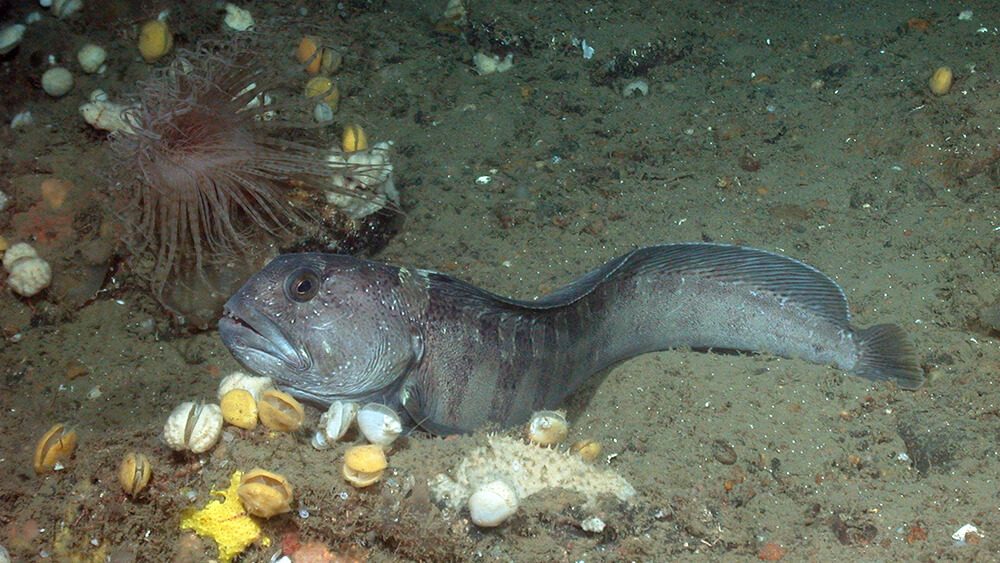For Researchers

Individuals and organizations interested in pursuing research and monitoring studies in the sanctuary should contact the sanctuary's research coordinator, Dr. David Wiley, with information about your goals prior to launching a project. Research activities may require a permit from the sanctuary or one of our resource trustee agencies.
Research Permits
Stellwagen Bank National Marine Sanctuary regulations provide for temporary permitting of specific activities that are not otherwise permissible but will present a public benefit by furthering the management and protection of sanctuary resources. Such activities are reviewed on a case-by-case basis. Permit requests are evaluated based on their potential single and cumulative impacts to sanctuary resources versus the potential benefits the activity may provide in terms of resource protection. Permitted activities are typically research or education oriented.
R/V Auk
The sanctuary's research vessel, R/V Auk, is used for a variety of projects, including deploying and retrieving equipment, support for dive operations, mother ship for whale and shearwater tagging, and platform for sand lance and seabird studies. Use of R/V Auk is assigned primarily to operations that support the mission and goals of the sanctuary. Learn more about Auk and its capabilities.
Clearances
Scientists working with sanctuary staff in sanctuary offices and/or on R/V Auk must receive official clearance and submit proper paperwork. Foreign nationals should estimate approximately 60 days for clearance. Go to our Vessels section to learn more about R/V Auk and to get appropriate forms and contact our Facilities Coordinator, Dave Slocum, about obtaining ship time for research.
Ocean Conditions
For important real-time information on conditions in the sanctuary, researchers can access a network of buoys that have been deployed in and near Stellwagen Bank National Marine Sanctuary. Collected parameters include wind speed and direction, wave height, dominant wave period, average wave period, air temperature, water temperature, and atmospheric pressure.
Office and Storage Space
At this time, the sanctuary cannot offer any laboratory space or visiting investigator offices. The boathouse can be used for storage of equipment in the days immediately before or after an expedition.
Diving
Any diving for official research purposes must comply with NOAA diving requirements. The sanctuary cannot supply any diving equipment, but R/V Auk can be configured for diving operations.
Reciprocity Divers
NOAA divers often work with other partners during dive missions to increase the scope and impact of their efforts. NOAA divers may only work with partners that have "reciprocity" agreements in place with the NOAA Diving Program. Before an agency or group of individuals can become a reciprocity partner, appropriate evaluations must be made beforehand to make sure all reciprocity divers understand and are following the NOAA safety standards and are properly equipped. In this way, all divers adhere to the same standards and procedures, and can work safely as a team.
Learn more about reciprocity requirements
Conducting Non-NOAA Dive Operations Aboard R/V Auk
A non-NOAA organization may conduct dive operations from NOAA sanctuary vessels. The visiting organization may dive under their standards, provided they are comparable to NOAA's standards. The NOAA Dive and Safety Board (NDCSB) will review the dive plan and dive emergency accident plan for safety and make a recommendation to the NOAA representative approving the agreement. The agreement has checkboxes indicating the applicability of Occupational Safety and Health Administration (OSHA) diving standards, and whether the visiting organization has current reciprocity with the NOAA Dive Program. The vessel captain is also required to review and approve the operation. Forms must be submitted at least six weeks in advance for approval.
Access NF 57-03-10 for non-NOAA dive operations aboard NOAA vessels.

